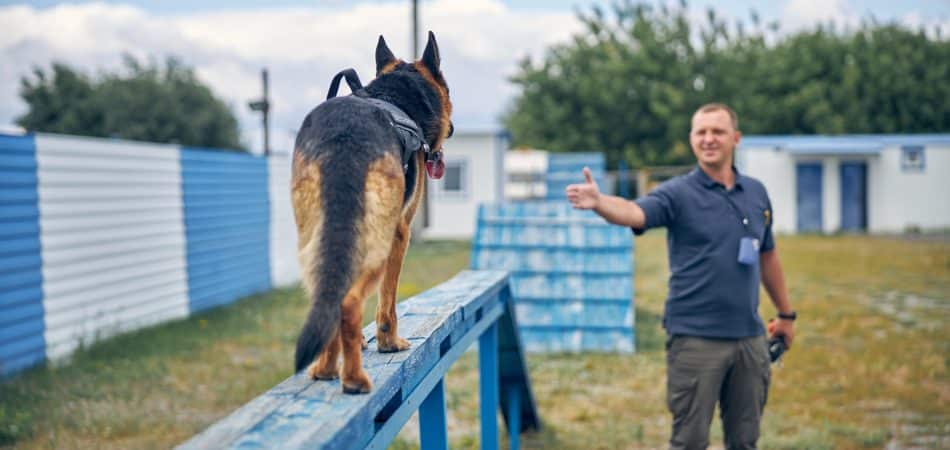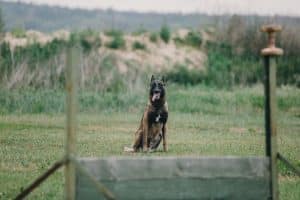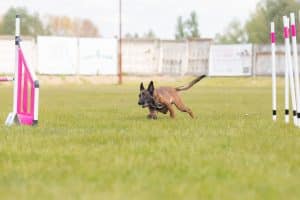






The human brain loves efficiency. So does the canine mind. That means skills that aren’t reinforced get deprioritized. Neural pathways weaken. Muscle memory softens.
And before you know it, your once-flawless Malinois is second-guessing a bite command, or your Rottweiler hesitates when you need him to hold his ground.
It’s not disobedience. It’s biology.
Ever watched a boxer step back into the ring after a long break? They don’t forget how to play, but their reaction time slows. Their endurance drops. They lose the edge that made them great.
Now, apply that to your protection dog. He’s an athlete—trained for precision, pressure, and peak performance. And like any elite performer, time off without reinforcement means decline.
So, what do you do when life demands a break from training?
Regression in training isn’t a conscious choice by your dog—it’s simply how the brain works. When a skill isn’t reinforced regularly, the neural pathways supporting it weaken.
This process, called synaptic pruning, helps the brain prioritize frequently used connections while trimming away those that aren’t.
In protection dogs, regression can show up in different ways: hesitation, delayed response times, apparent forgetfulness of key commands, increased fear or anxiety, and even reverting to old behaviors.
If you’ve ever tried to break a habit, you know how tough it can be—frustrating, exhausting, and sometimes discouraging.
Dogs experience the same struggle. Their old, well-practiced behaviors come more naturally, and until new habits are reinforced enough to take over, they’ll often default to what they know best.

However, regression can start within weeks, especially in younger or less experienced dogs.
The good news? Regression isn’t the same as starting from scratch. Your dog hasn’t “forgotten” the skills entirely. They’re just buried under a layer of rust. The right approach can bring them back quickly.
Physical drills might be limited, but mental engagement can keep your dog’s skills razor-sharp.
Protection dogs thrive on problem-solving. Keep his brain engaged, and you’ll slow down regression significantly.
A full training schedule isn’t always realistic, but short, focused sessions can be just as effective—sometimes even more so.
Brief but intense training moments woven into daily activities help keep skills sharp and prevent regression.
Sometimes, the best way to maintain readiness is by simply adjusting daily routines.

If an injury is the reason for reduced activity, controlled movement is key. Leash walking, swimming, or other low-impact exercises help maintain muscle tone without causing further strain.
Keeping your dog active within safe limits prevents a complete loss of conditioning and keeps their mind engaged.
Muscle maintenance is just as important as exercise. Regular stretching and massage can improve mobility, reduce stiffness, and support overall physical well-being.
Just as athletes rely on recovery techniques, working dogs benefit from hands-on care to keep them limber and ready to perform.
Diet also plays a crucial role in maintaining peak condition. A decrease in activity often means your dog requires fewer calories.
Adjusting their food intake accordingly helps prevent unwanted weight gain, ensuring they stay fit and making it easier to get back into a full training routine when the time comes.
A disengaged handler leads to a disengaged dog. Your energy, commitment, and enthusiasm play a massive role in keeping your dog sharp.
If your dog has regressed, don’t panic. Those skills aren’t gone—they’re just buried under a little rust.
Remember, your dog isn’t failing—he’s doing his best to be brave. And this setback? It’s not his fault, and it’s not yours either. No blame, no guilt—just a reminder that you’re in this together.
So, take a deep breath (or five). It’s okay to feel frustrated, even heartbroken, if things aren’t where you hoped they’d be. But don’t stop here. Because there’s still a way forward.
Keep reading—we’re getting that progress back.
Before jumping back into full-speed training, take a step back and evaluate. Set up a controlled environment and test your dog’s responses—obedience cues, reaction to triggers, engagement levels. Look for patterns:
You’ll need real data to build an effective plan.
Go back to the foundational skills with high engagement. Short, successful reps rebuild confidence and precision. Don’t rush—stack small wins early.
Revisit your first week of training. Maybe your trainer gave you a structured plan, or you followed a set routine. Do that again.
It’s simple, familiar, and—most importantly—you’ve already done it before, which means you’re likely better at it now than you were then.
Taking time to revisit the easy stuff will give you and your dog a much-needed confidence boost. Plus, it’s a chance to enjoy the process—low pressure, high reward.
Don’t expect peak performance on Day One. Once your dog is feeling solid on the basics again, then start layering in difficulty.
Increase challenges in small, manageable increments—just enough to stretch their ability without overwhelming them.
This doesn’t mean following your entire training plan from scratch. You’re just pressing “reset” for a short period to rebuild confidence.
After that? You’ll be able to jump right back to where you left off, with a stronger, more prepared dog.
It’s time to gradually reintroduce challenges. But don’t throw them into the deep end—ease them back in.
Start with mild pressure: small distractions, short-duration tasks, or slightly increased distances.
Watch their body language. Are they engaged? Hesitant? Overwhelmed? Adjust accordingly.
The key is controlled exposure. Push just enough to stretch their abilities, but not so much that they shut down. Progress happens at the edge of comfort—not beyond it.
Stay patient, stay observant, and trust the process. With steady, intentional steps, your dog will be back to peak performance before you know it.
Training shouldn’t just be about precision—it should be something your dog wants to do.
Lean into what excites them. High-value rewards, play sessions, a favorite toy—use whatever gets their tail wagging. Keep sessions dynamic, fast-paced, and fun. Engagement is everything.
If your dog seems hesitant, dial up the motivation. Short bursts of high-energy training, lots of praise, and frequent success will remind them why they love working with you.
Rebuilding isn’t just about skill—it’s about attitude. And when your dog is eager, confident, and engaged, that’s when you know the comeback is complete.
But just because trainers know regressions are part of the process doesn’t mean they enjoy facing them. I’ve helped countless dogs and their owners through setbacks, yet when my own dog regressed, I felt the frustration firsthand.
If your dog’s training has hit a rough patch, and your patience is wearing thin, you’re not alone.
It’s completely normal to need support on this journey. Most dog owners benefit from working with a professional trainer who can provide guidance tailored to their dog’s specific challenges.
If you find yourself in need of assistance, Vanguard Protection Dogs is here to help. We understand the ups and downs of training and are committed to helping you and your dog thrive together.